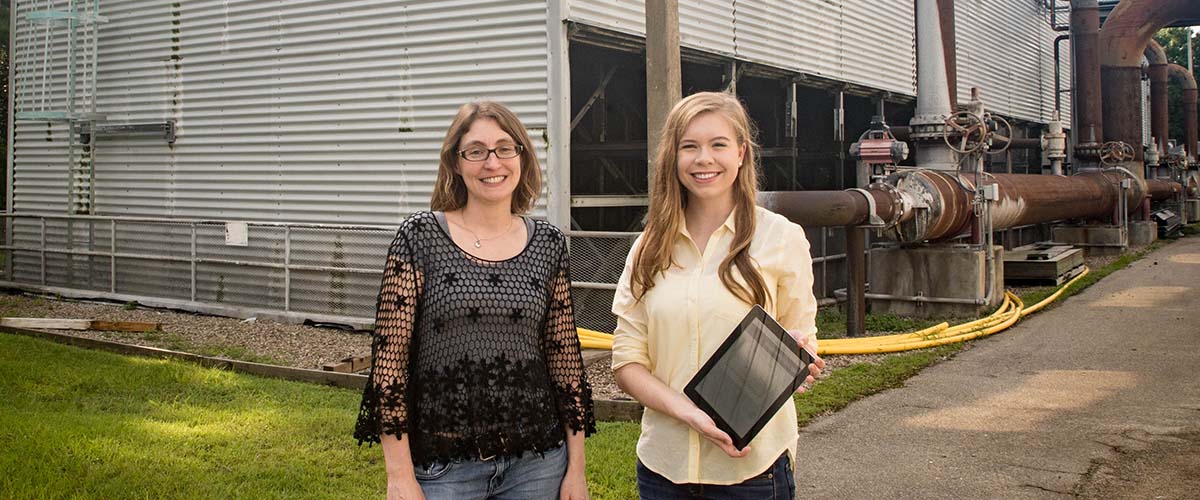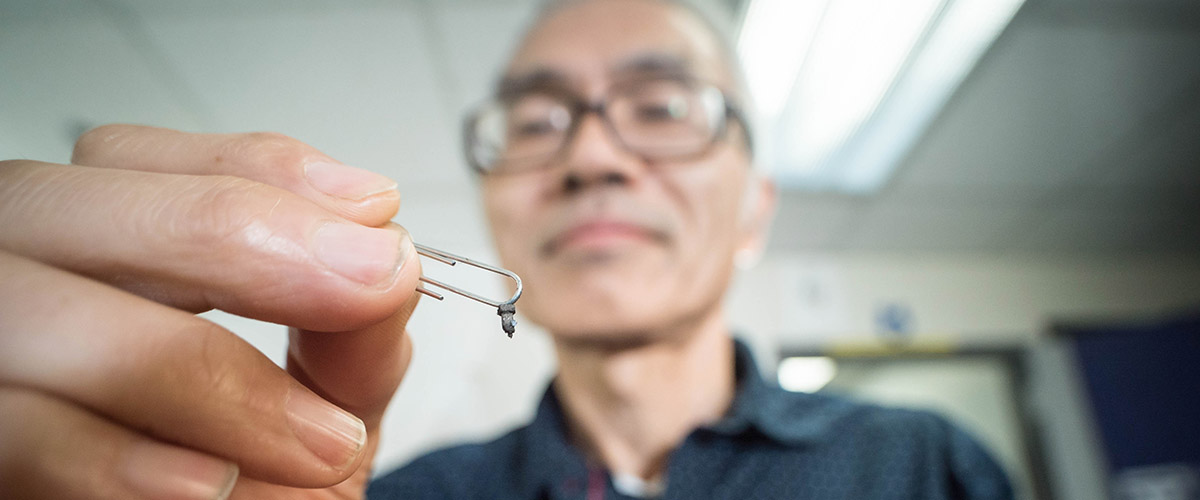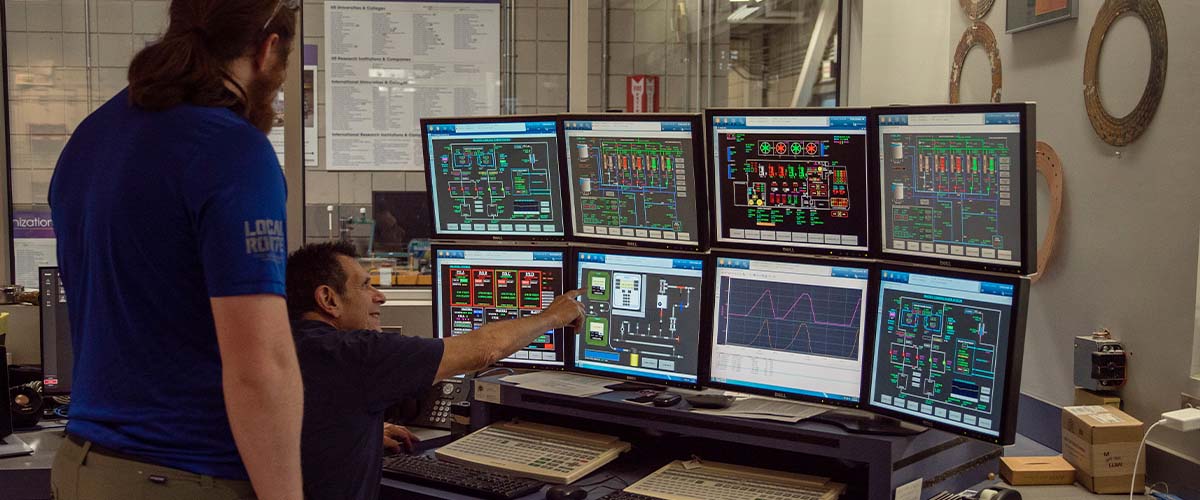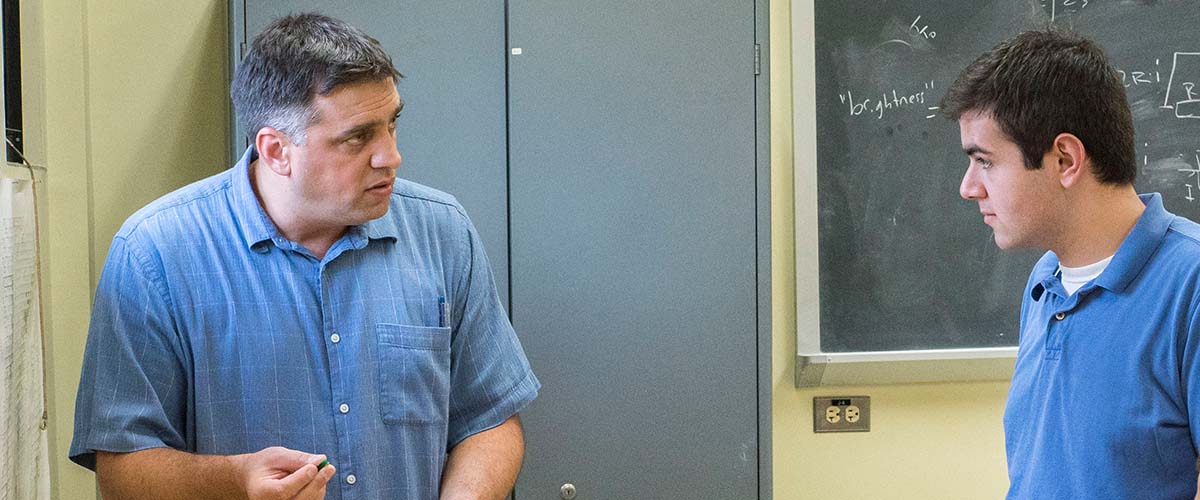If a task doesn’t have an app for it, is it even really a task?
These days, no! At least, it’s not a user-friendly task.
So it has been with employees at the National MagLab, who for years have collected and shared quality control data on the lab’s chilled water plant (critical to keeping the resistive magnets cool) by following these steps:
- Three times a week, walk down to the plant
- Carry out system performance tests
- Write down the results on a piece of paper
- Snap a cell-phone photo of the paper
- Share it with other staff via email or our internal communication app
No automatically archived data? No way to generate cool charts or to document trends? No swiping??? Can you say antiquated?
Julia Smith can … and did.
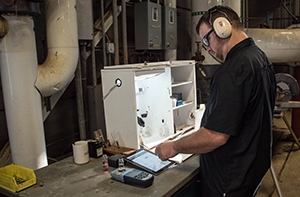
Kevin Gamble, facilities superintendent, using the new system.
Smith is a research scientist in the MagLab's DC Field Facility, and part of her job is to make sure operations run smoothly. She knew there was a better way to collect and track the chilled water plant data, and she knew that, as a physicist, she wasn't the person to do it. So she hired Abbey Centers, a computer science student at nearby Florida State University, to do the job for her as part of the MagLab's Research Experiences for Undergraduates summer program.
Centers, 19, hoped the REU program would give her an idea of what a career in programming might look like.
Smith, her mentor, kept her expectations realistic: By the end of the summer, she hoped to have some digital tracking system that would be a cut above paper and pencil.
"You think about the project and you break it down to what you think are doable chunks for a student," Smith said. "You say, 'At a minimum I think she can do this.'"
The MagLab's facility and operations team keeps close tabs on its chilled water plant, which is critical to keeping the magnets running smoothly. Powered by up to 30 megawatts of electricity, each magnet generates lots of heat. The water keeps them from melting: It goes into the magnet at about 40 degrees Fahrenheit, and exits a few seconds later some 100 degrees hotter. (To read more about how the lab uses deionized H2O to cool down its magnets, read this story about the lab's infrastructure, or scroll to the bottom of that web page for an interactive diagram.)
So Smith's job for Centers was anything but busy work.
Centers has been hooked on programming since her freshman-year "Introduction to C++" class, when she wrote a line of code that successfully directed her computer to introduce itself. She still remembers the thrill of seeing appear on her screen the words, "Hello, world!"
"When I made my first program — when I did something, and [the code] did something on the computer — I loved that," said Centers, a Tallahassee native. "It was so cool to me."
The soft-spoken Centers, one of 18 REU students working at the MagLab this summer, dove right into her new MagLab project, working with Smith and other staff to figure out what they wanted. She did research, learned new programming tools to build a database, and created a user-friendly interface that allows staff to enter data directly into a phone or iPad. They can also share data and generate charts and graphs.
Almost 10 weeks after Centers started the project, the beta version of the new tool is up, running and getting rave reviews.
"It was really fun to see how she just took it and ran with it," Smith said. "It went so much further than anyone would have hoped."
Smith has been so happy with Centers that she has hired her to work part time this coming semester to modernize data collection, sharing tracking for other MagLab systems.
"She's just a great addition to the team," Smith said. "She enjoys what she's doing, and what she is doing is something that we need."
By Kristen Coyne



